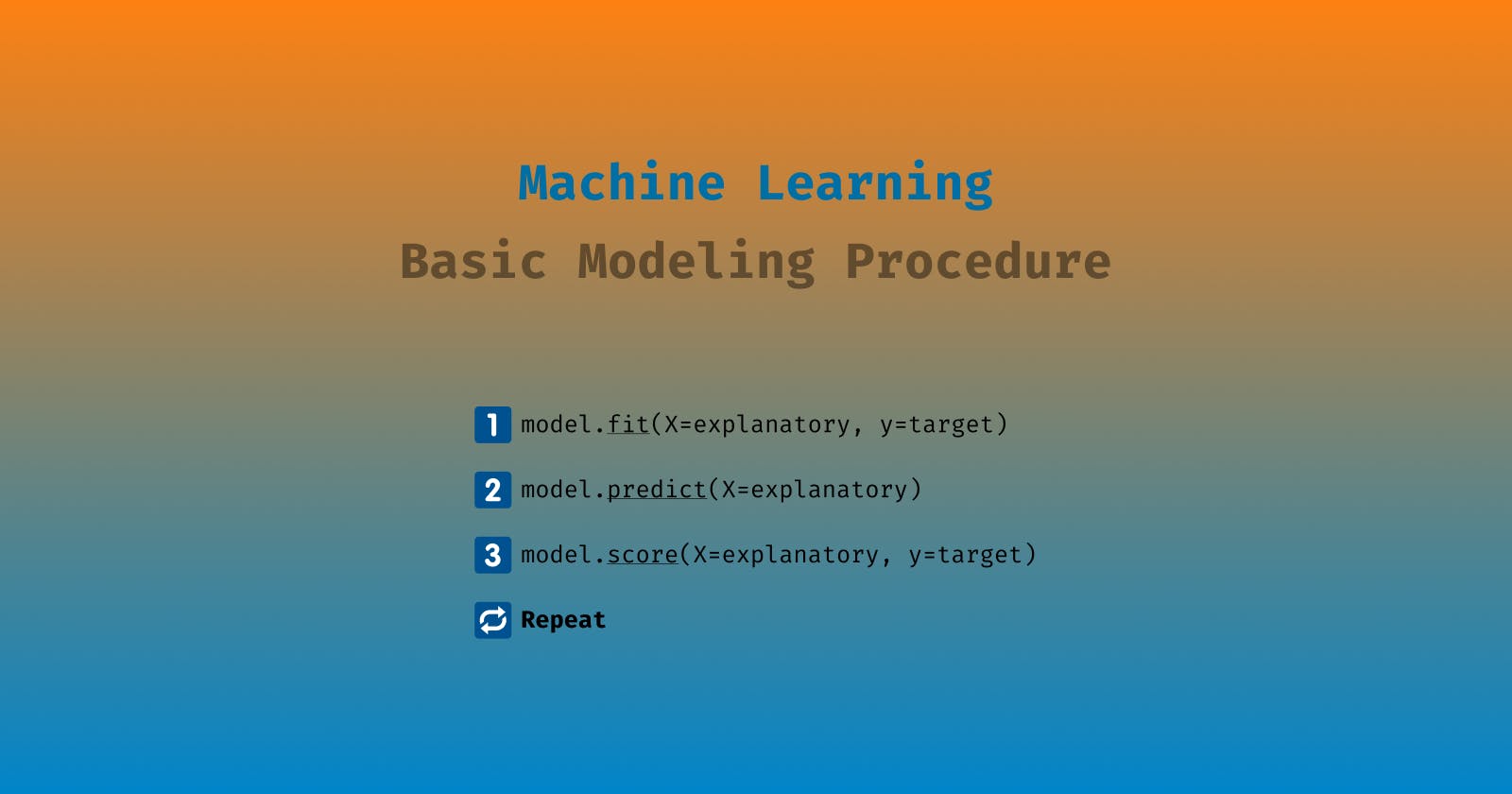Why do all Machine Learning models follow the same steps?
Understand how all Machine Learning Models follow the same procedure over and over again
Introduction
It's tough to find things that always work the same way in programming.
The steps of a Machine Learning (ML) model can be an exception.
Each time we want to compute a model (mathematical equation) and make predictions with it, we would always make the following steps:
model.fit()→ to compute the numbers of the mathematical equation..model.predict()→ to calculate predictions through the mathematical equation.model.score()→ to measure how good the model's predictions are.
And I am going to show you this with 3 different ML models.
DecisionTreeClassifier()RandomForestClassifier()LogisticRegression()
Load the Data
But first, let's load a dataset from CIS executing the lines of code below:
- The goal of this dataset is
- To predict
internet_usageof people (rows)- Based on their socio-demographical characteristics (columns)
import pandas as pd
df = pd.read_csv('https://raw.githubusercontent.com/jsulopz/data/main/internet_usage_spain.csv')
df.head()
| internet_usage | sex | age | education | |
|---|---|---|---|---|
| 0 | 0 | Female | 66 | Elementary |
| 1 | 1 | Male | 72 | Elementary |
| 2 | 1 | Male | 48 | University |
| 3 | 0 | Male | 59 | PhD |
| 4 | 1 | Female | 44 | PhD |
Data Preprocessing
We need to transform the categorical variables to dummy variables before computing the models:
df = pd.get_dummies(df, drop_first=True)
df.head()

Feature Selection
Now we separate the variables on their respective role within the model:
target = df.internet_usage
explanatory = df.drop(columns='internet_usage')
ML Models
Decision Tree Classifier
from sklearn.tree import DecisionTreeClassifier
model = DecisionTreeClassifier()
model.fit(X=explanatory, y=target)
pred_dt = model.predict(X=explanatory)
accuracy_dt = model.score(X=explanatory, y=target)
Support Vector Machines
from sklearn.svm import SVC
model = SVC()
model.fit(X=explanatory, y=target)
pred_sv = model.predict(X=explanatory)
accuracy_sv = model.score(X=explanatory, y=target)
K Nearest Neighbour
from sklearn.neighbors import KNeighborsClassifier
model = KNeighborsClassifier()
model.fit(X=explanatory, y=target)
pred_kn = model.predict(X=explanatory)
accuracy_kn = model.score(X=explanatory, y=target)
The only thing that changes are the results of the prediction. The models are different. But they all follow the same steps that we described at the beginning:
model.fit()→ to compute the mathematical formula of the modelmodel.predict()→ to calculate predictions through the mathematical formulamodel.score()→ to get the success ratio of the model
Comparing Predictions
You may observe in the following table how the different models make different predictions, which often doesn't coincide with reality (misclassification).
For example, model_svm doesn't correctly predict the row 214; as if this person used internet pred_svm=1, but they didn't: internet_usage for 214 in reality is 0.
df_pred = pd.DataFrame({'internet_usage': df.internet_usage,
'pred_dt': pred_dt,
'pred_svm': pred_sv,
'pred_lr': pred_kn})
df_pred.sample(10, random_state=7)
| internet_usage | pred_dt | pred_svm | pred_lr | |
|---|---|---|---|---|
| 214 | 0 | 0 | 1 | 0 |
| 2142 | 1 | 1 | 1 | 1 |
| 1680 | 1 | 0 | 0 | 0 |
| 1522 | 1 | 1 | 1 | 1 |
| 325 | 1 | 1 | 1 | 1 |
| 2283 | 1 | 1 | 1 | 1 |
| 1263 | 0 | 0 | 0 | 0 |
| 993 | 0 | 0 | 0 | 0 |
| 26 | 1 | 1 | 1 | 1 |
| 2190 | 0 | 0 | 0 | 0 |
Choose Best Model
Then, we could choose the model with a higher number of successes on predicting the reality.
df_accuracy = pd.DataFrame({'accuracy': [accuracy_dt, accuracy_sv, accuracy_kn]},
index = ['DecisionTreeClassifier()', 'SVC()', 'KNeighborsClassifier()'])
df_accuracy
| accuracy | |
|---|---|
| DecisionTreeClassifier() | 0.859878 |
| SVC() | 0.783707 |
| KNeighborsClassifier() | 0.827291 |
Which is the best model here?
- Let me know in the comments below ↓

